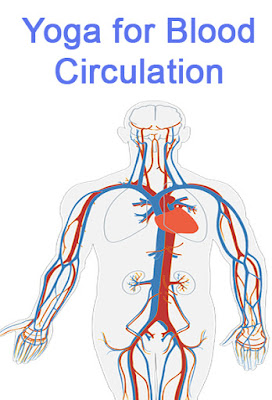The circulatory system is an essential part of what keeps us going. It is also referred to as the cardio-vascular system and consists of the heart and the blood vessels. The hearts job is to pump blood to different parts of the body and this blood carries vital nutrients and oxygen to the different organs. It travels via the blood vessels. The heart is divided into four compartments that each have a different role. The compartment on the upper right is responsible for collecting the incoming impure blood from all over the body and moving it on to the lower right compartment. The lower right compartment sends the blood on to the lungs for purification. The purified blood is then returned to the heart - this time in the upper left ventricle from where it is moved into the lower left compartment and then back out as fresh, pure blood to the remainder of the body.
The blood is primarily carries through main arteries that are thick tube like structures leading from the heart around the body. The arteries branch into many sub arteries which in turn will divide into thin-walled capillaries. The capillaries interact with the organs directly and due to their thin walls they pass oxygen and nutrients to the organs and tissues that need them the most. The used resources are ejected from the tissue and back into the capillaries to be fed on through specialized veins to return the impure blood back to the heart to start the entire process once more. This is a difficult job as the pressure has decreased this far from the heart so the veins are assisted by valves to regulate the flow.
The important thing to understand about the way the circulatory system is set up is that it has two main parts, the blood system and the lymphatic system. It is the job of the lymphatic system to remove waste from the circulatory system. The two different systems run almost side by side but while the blood system has a pump - the heart - the lymphatic system does not have a single organ designed to power it's operations. This job falls to the muscles, which pump the lymphatic system by contracting and expanding. This is of course where Yoga comes in.
Yoga is a discipline unique in it's combination of focus on body, mind and spirit. The body component is taken care of with a series of poses and postures, which are designed to clear blockages in the circulatory system and ensure that everything is flowing as it should at an even regular rate. It also flexes the muscles and strengthens them very efficiently over time with a minimal amount of 'grunt'. This strengthening and constant working of these muscles pumps the lymphatic system and makes out body many times more efficient at the removal of waste matter. As a result people who practice Yoga regularly can expect that they will have a greatly enhanced immune response system and be able to deal with infection and disease better than their non-Yogi counterparts.
Furthermore the benefits start before this. Yoga sessions will usually being with a series of standing exercises emphasizing long slow breathing exercises. These breathing exercises are common to all forms of yoga and force us to concentrate on our breath and it's pathway trough the body each time we take a fresh breath. The exercises are designed especially so that people are not restricted in where and when they can practice them and ideally would use them instead of our slower shallower normal breathing pattern.
Because the breaths are longer and deeper the oxygen intake is increased. Combined with the enhancing effects that the exercises have on the regularity of circulation in the blood system the oxygen is much more efficiently transported to the muscles of the body. If these muscles, along with our other organs and tissues are not receiving the oxygen and nutrients we need then we starve them and become ill as a result.
As you can see Yoga is of great assistance to the complex and interlocking system of circulation. It recognizes the basis and importance of the system and helps to being it back into balance.






